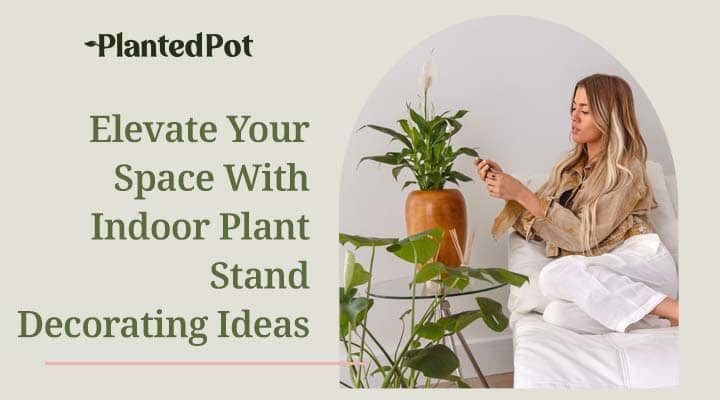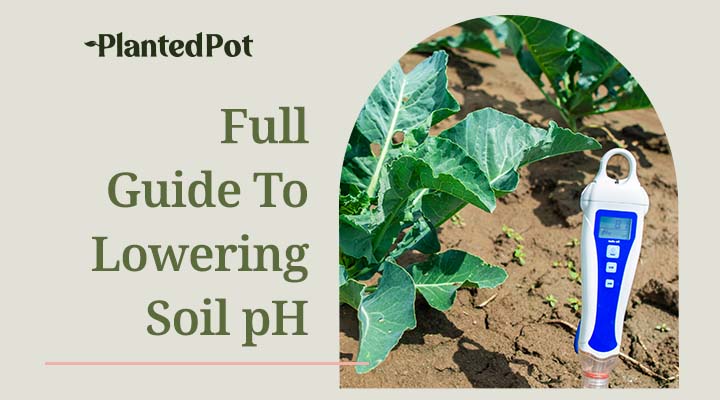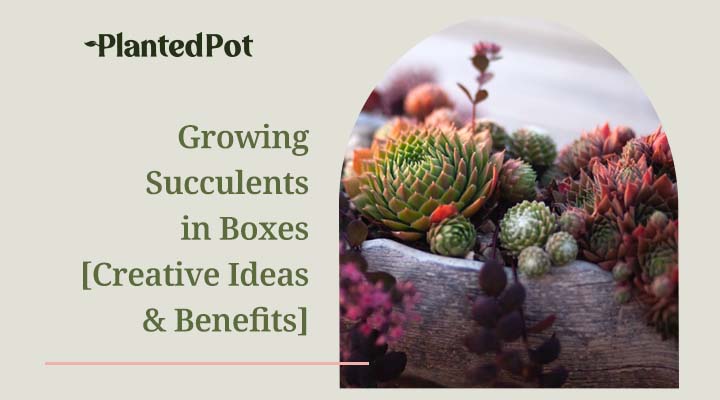
Types of Soil: Choosing the Right Mix for Your Best Garden
Home / Types of Soil: Choosing the Right Mix for Your Best Garden
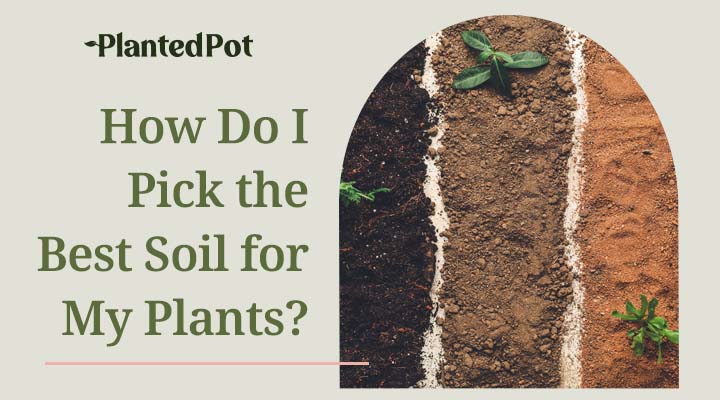
Types of Soil: Choosing the Right Mix for Your Best Garden
- Olivia Richman
- August 17, 2021
- 10:02 am
- No Comments
If you’re new to gardening, you might be wondering about the different types of soil and how they impact the way your plants grow. The short answer is that there are many different types of soil, determined by the minerals, organic materials, and texture.
And while a lot of soil looks similar to the naked eye, plants will notice the difference! Each soil has different drainage and properties, meaning it will work well for certain plants and not for others. It’s important to identify which type of soil is in your garden so you can better choose plants that will thrive in your backyard naturally!
What is Soil?
The simple definition of soil? It’s that stuff in the garden that gives your plants the nutrients they need! But what is soil made up of? Soil is comprised of minerals and organic matter, as well as liquids and gases on the earth’s surface, that serve as a natural medium for the growth of plants.
The upper soil is known as a boundary between soil and air, shallow water, live plants, and plant materials that are not yet decomposed, according to Soil Taxonomy. This soil has been altered by interactions with climate and living organisms.
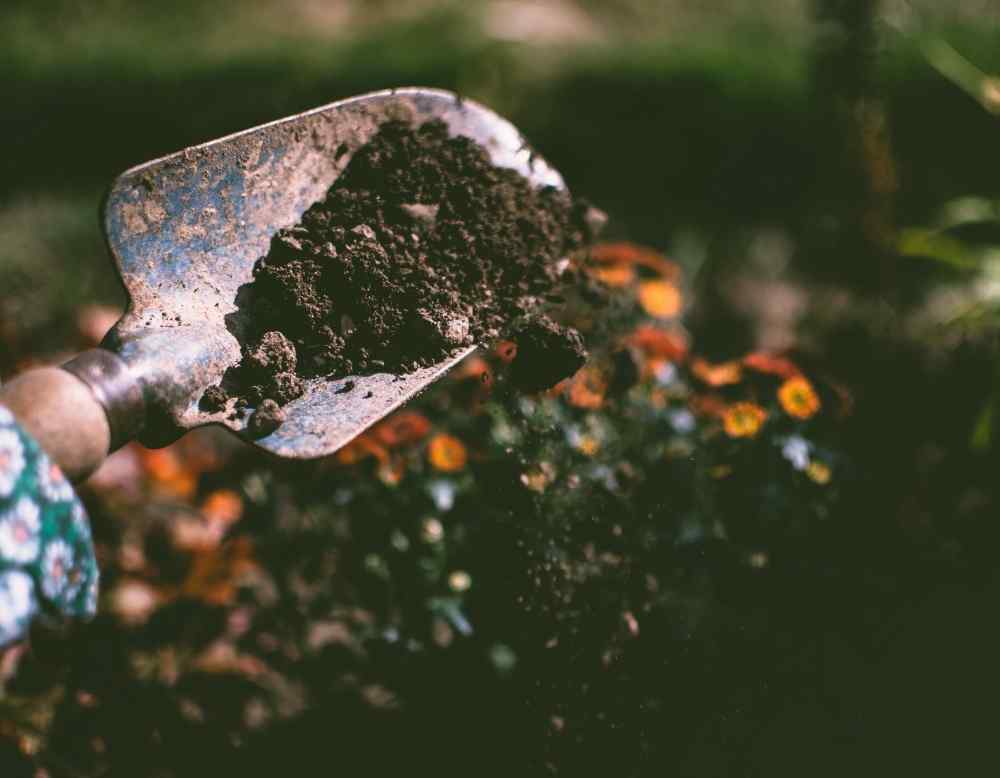
Does Soil Type Matter?
Yes! Each plant has its own environmental and soil requirements to thrive. The soil should usually reflect the soil they grow in when in their natural habitat. Depending on what’s inside soil, it can remain moister than others or have certain minerals that specific plants require.
How Many Types of Soil Are There?
There are six main types of soil groups:
- Clay
- Sandy
- Silty
- Peaty
- Chalky
- Loamy
Each soil has different properties, meaning it’s important to know which type of soil you have in your garden since only certain plants will thrive in each specific soil type.
Types of Soil
The six soil types are defined by what they consist of, from nutrients to organic matter to water. They also react differently to weather and seasons, making some more viable for certain plant types than others. Here are the six commonly found soils that may be in your gardens!
Sandy Soil
Sandy soil is light, warm, and dry. Because of the high proportion of sand and little clay, sandy soil is pretty light in color and weight. This type of soil is usually acidic and low in nutrients. But it’s easy to work with because of how quickly water is drained.
Sandy soil will warm up very quickly in the spring compared to other types of soil. However, the sandy soil will dry out in the summer, and the low nutrients may be washed away by the rain. You may have to add organic matter to sandy soil to ensure it has enough nutrients to grow your plants properly.
Here are the best plants to grow in sandy soil:
- Bearded Iris: This hardy plant doesn’t need a lot of attention. They bloom in the late spring and again in mid-fall.
- Black-Eyed Susan: With yellow flowers and black centers, this beautiful plant is a mid-summer favorite.
- Russian Sage: This sage is easy to maintain and provides purple-blue blooms that are genuinely stunning.
- Salvia: This plant is a member of the mint family. It’s compact with blue blooms in the late spring to early summer. They are low maintenance and hardy.
- Sedum: This bright perennial has pink clumps that bloom mid-summer to mid-fall. Despite its elegant beauty, the Sedum is low maintenance, making it perfect for sandy soil.
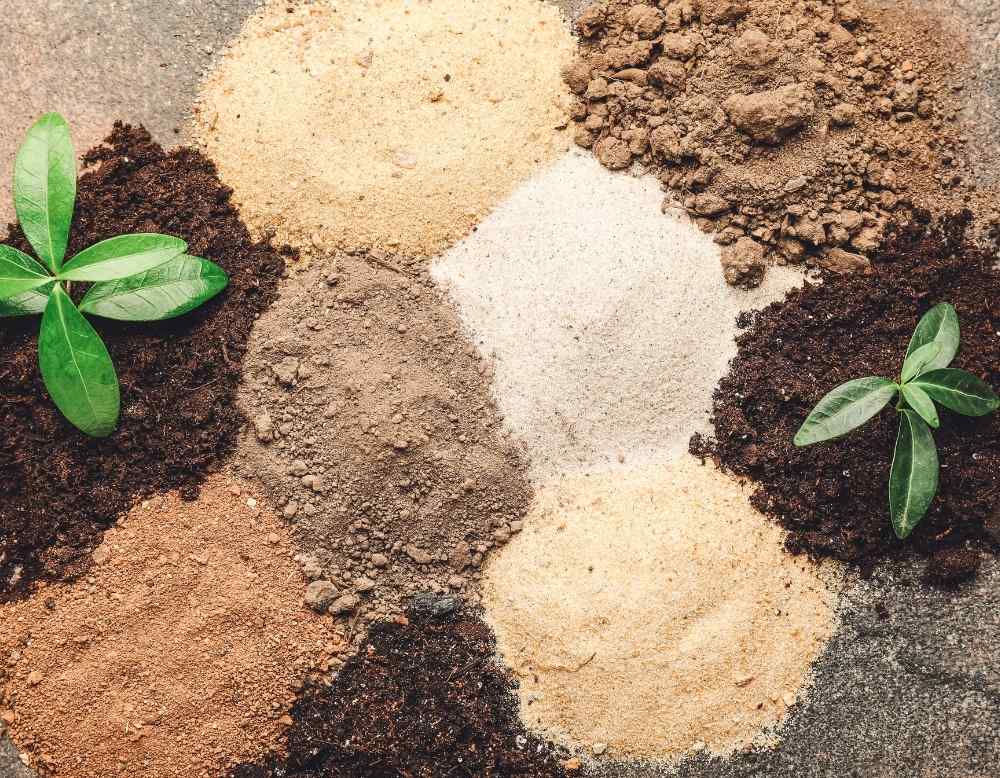
Clay Soil
This is a heavy soil type that’s super high in nutrients. It is made up of over 25% clay. Because of the spaces between the clay particles, this soil holds a high amount of water. It stays wet and cold in the winter but may dry out in the summer.
Clay soil can be a bit difficult for gardeners to deal with. The slow drainage can harm a lot of plants that don’t like sitting in consistently moist soil. And the dryness and cracking in the summer can bring on further complications. But some plants thrive in clay soil:
- Castor Bean: This perennial has bold textures and bright colors. They are very rugged plants and can make your garden look tropical and lush.
- Iris: Iris species tend to thrive in heavy soil. Whether it’s Japanese Iris or Louisiana Iris, these plants love the sun.
- Ornamental grass: Whether it’s dwarf Fountain Grass or the large Pampas Grass, ornamental grasses do great in clay soil.
- Coral Bells: This perennial plant can come in various colors, from green to deep purple to salmon. They do great in clay soil and require a garden with partial sunlight.
- Hosta: This durable plant doesn’t mind the shade or clay soil. They have large, vibrant leaves ranging from green to chartreuse, with variegated patterns.
- Cone Flower: This is a sun-loving summer bloomer that can be white, yellow, purple, pink, orange, or even lime! This popular plant performs well in clay soil.
Silt Soil
Silt soil is light and moisture-retentive. This soil consists of medium-sized particles that hold moisture well. But sometimes, the particles can become compacted, making them wash away in the rain. Sometimes gardeners will add organic matter, so the clumps are a bit more stable. Vegetables, fruits, and moisture-loving trees are some of the plants that thrive in silt soil. Here are some plants to check out:
- Mahonia: This is a unique shrub with a cluster of fragrant flowers that bloom in the later winter. They will sometimes get small fruits in the summer that birds love to eat.
- New Zealand Flax: This large and colorful plant is spiky and vibrant, making it the focal point of most gardens. It has sword-like leaves that shoot up from the base.
- Willow Tree: The Weeping Willow can grow up to 40 feet tall. They have small trunks and long, loosely hanging branches. Since they hang downward, they can appear to be “weeping,” hence the name.
- Dogwood Tree: Dogwood Trees have a unique bark that’s different from most other trees. It’s a bit gray and similar in texture to alligator skin. They also have smooth, oval-shaped leaves and white flower clusters.
Peat Soil
Peat soil is very high in organic matter, helping it retain a large amount of moisture. This type of soil is not usually found naturally in a garden and is imported into yards by gardeners looking for optimum soil bases for growing. Here are some of the plants you’ll find thriving in peat soil:
- Azalea Flower: These funnel-shaped and fragrant flowers will add a pop of beautiful color to your garden. The flowers come in pink, red, white, yellow, and purple.
- Legumes: This fruit plant is part of the pea family. Also called pods, legumes include beans, soybeans, chickpeas, peas, lentils, carob, alfalfa, and clover.
- Rhododendrons: This beautiful plant has large, paddle-shaped leaves and bell-shaped flowers.
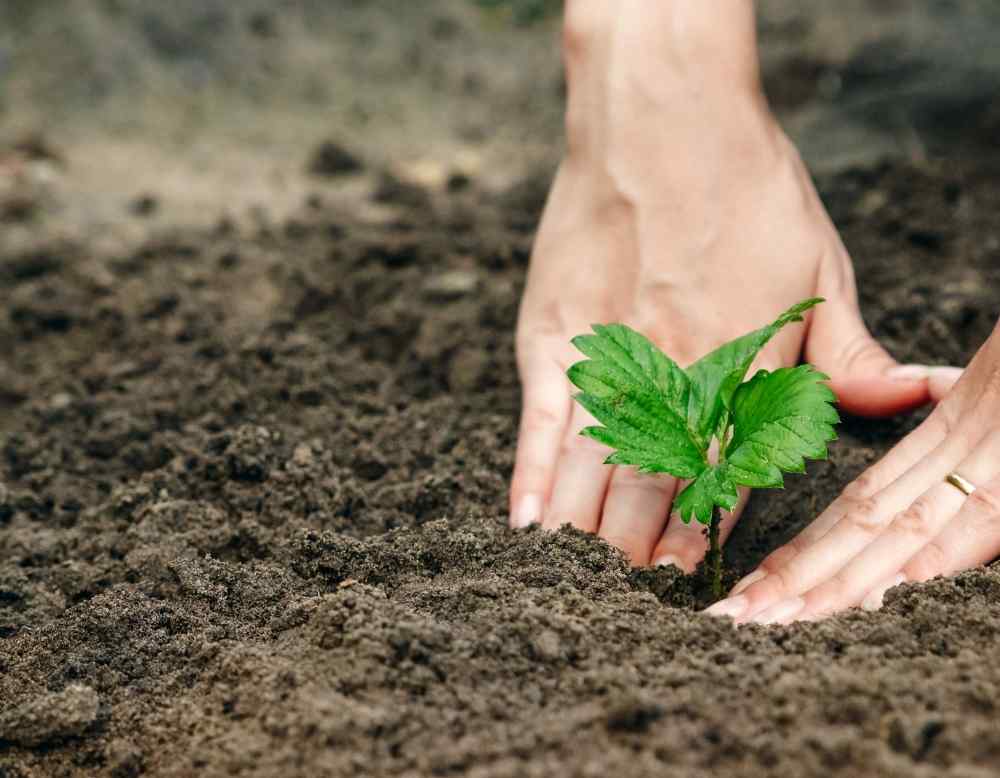
Chalk Soil
Chalk soil can be light or heavy, but it will always be highly alkaline due to the calcium carbonate or lime within. Chalky soils are free-draining and are lower in nutrients than other soil types. They dry out quickly, but soils with clay will be more moisture retentive. The high alkaline level does not support the growth of plants that require acidic soils to grow. This type of soil can be acidified unless you see visible white lumps.
Plants that thrive in chalky soils include climbing plants like akebia, grapevines, and jasmine. Conifers include yew, pine, and juniper. Perennial plants that prefer chalky soil include aster, achillea, and campanula, while shrubs include the butterfly bush, rosemary, and spiraea.
Loam Soil
Loam soil is a mixture of sand, silt, and clay. They are combined to reduce the negative effects of each type. Loam soil is fertile with good drainage, making it easy to work with. Loam soil is the best for gardeners, who sometimes will add an additional layer of organic matter.
Most plants can grow in loam soil. It’s also great for crops, including tomatoes, peppers, green beans, cucumbers, onions, and lettuce. If your loam soil is sandier, you can grow eggplants, carrots, spinach, greens, corn, okra, and radishes.
What Are the Most Important Properties of Soil?
When looking for the perfect soil for your plants, it’s important to look for the following properties:
Soil Texture
Soil is made up of particles of varying sizes depending on the organic matter within. Some are gritty and sandy, while others are smooth. Clay soils are even sticky.
The texture is important because it can influence whether a soil is free-draining or if it holds water. Big sand particles, for example, drain water quickly because the space between each particle is also large. Clay particles, on the other hand, drain quite poorly, holding onto water for longer.
Soil Structure
Structure describes the way the sand, silt, and clay particles clump together. The structure is determined by organic matter and soil organisms, like decaying plants and earthworms.
Soil structure is important for plant growth since it regulates the movement of air and water. This influences root development and how much nutrients are available. You want your soil structure to be crumbly and fine, the soil breaking up easily if squeezed. Poor soil structure is course and firm.
Soil Porosity
This term refers to the soil’s pores, which influence the movement of air and water. Healthy soils should have many pores, while poor soil has few visible pores.
Soil porosity is determined by the way the soil is managed. If grass is worn away, for example, the exposed soil will have altered porosity. Puddles will also impact a soil’s porosity, not allowing water to drain away.
Soil Chemistry
Soil can be acid, alkaline, or neutral. This is known as a soil’s pH level. This level influences the amount of nutrients plants absorb, determining their growth. Some plants grow better in more acidic soil (pH 5.0 – 6.0), while others like neutral soil (7.0).
Environmental changes determine soil chemistry. For example, rainfall can cause minerals to be leached away. It can also be impacted by garden care, like adding lime to make the soil less acidic.
Soil Color
A lot of people just think of soil as being brown. But soil colors are abundant, ranging from black to red to white. The organic matter within the soil determines the soil’s color. An even, single color means that soil is well-drained. If you notice patches or rusty spots, the soil has poor drainage.
Final Thoughts – Types of Soil
As you can see, soil is more than just dirt! Soil is made up of a lot of components that determine what type of soil it is. There are six major types of soil you’ll come across, all of which have their own properties that make them great for some plants and bad for others.
It’s important to determine what type of soil you have so you can find plants that will suit your garden best. Start by checking out your soil’s important properties. Study the texture, the color, the porosity, and the pH level to get a better idea of what type of soil you have and how it acts throughout each season. While you can impact the type of soil you have in your garden, it’s important to discover the natural soil type you have and how to best work with it!


